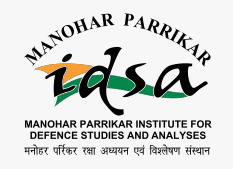ISRO cannot afford failures
ISRO needs to conduct a thorough enquiry particularly because failure in a time-tested and launch proven “stage one technology” is undesirable.
- Ajey Lele
- December 28, 2010
The Centre tracks relations between India and the countries of North America. US and Canadian internal developments are also monitored to have a better understanding of their role as drivers of foreign and domestic policies. The large Indian diaspora in these two countries also serves as a bridge for strengthening bilateral relations.
The Centre also actively tracks and analyses trends in strategic technologies, with principal focus on critical technologies and their implications for national security. It addresses evolving threats in space security and cyber security, ensuring comprehensive research into these critical domains. The other mandate of the Centre is to undertake research on Biological and Chemical Weapons with a focus on studying the dangers of proliferation and terrorism.
No posts of Books and Monograph.
No posts of Jounral.
ISRO needs to conduct a thorough enquiry particularly because failure in a time-tested and launch proven “stage one technology” is undesirable.
Sarkozy’s speech at ISRO was an interesting mix of issues relating to geostrategic significance, business, and collaboration in science and technology.
The Kalam-NSS Indian-American Energy Initiative is being conceptualized by individuals with experience in the field of space technologies as well as policy planning.
There is a need to appreciate the medical, social and ethical consequences and liabilities of the use of non-lethal weapons before putting them to use.
Over the years, a broad pattern regarding the states’ response to various arms control and disarmament agreements is becoming visible. Particularly, states which do have peaceful borders and do not envisage any military threats to their security are usually found opting for various disarmament ideas.
The PSVLC15 launch has enhanced India’s capability in the field of cartography and space reconnaissance and demonstrated its capabilities in the small satellites market.
Spilling of gas from a chemical factory can happen either because of accidental release or sabotage. In this era of terrorism such threats need to be reviewed on a much broader canvas.
Weather patterns in a neighbouring state can be affected by experiments conducted on own territory. China needs to clear suspicions that have been aroused by its weather modification actions.
India should engage space have-nots at a different level, going beyond technological and commercial interests.
It is a dream project not only for India’s space research organization (ISRO) but for all Indians. With the successful launch of the Moon Mission, ISRO had put India into the bracket of deep-space achievers. The world took serious note of India’ space programme when in October 2008 ISRO successfully launched its satellite Chandrayan-1 towards the moon. If the 1998 Pokharan nuclear tests had helped India demonstrate its ‘hard power’ status, the success of the moon mission indirectly played a significant role towards establishing the ‘soft power’ credentials of the country.



